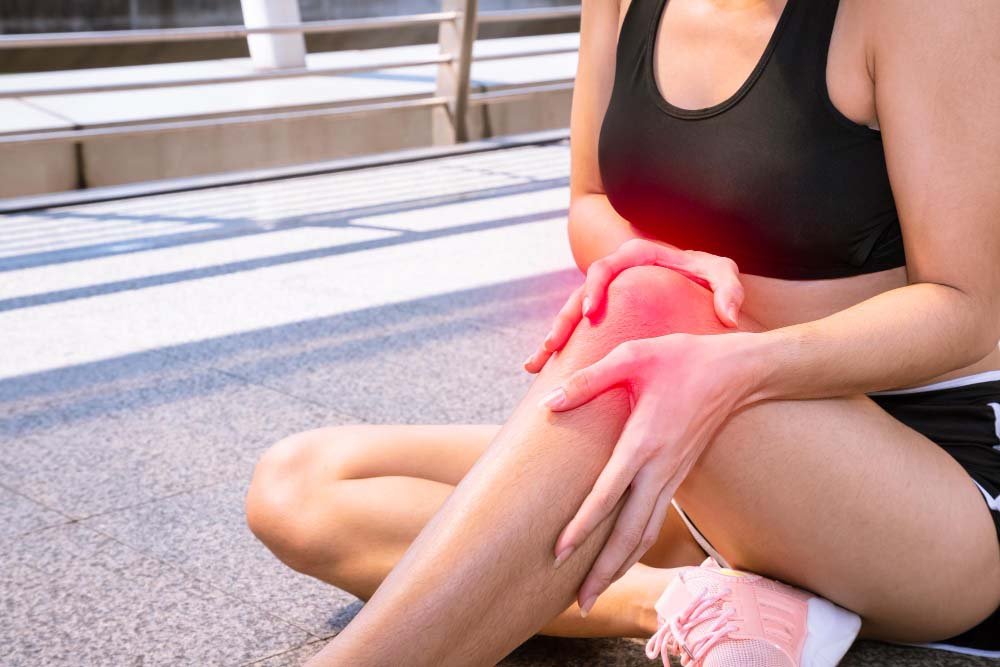Knee pain is another familiar discomfort experienced in childhood and adolescence, adulthood and old age, among athletes and ordinary people. Knee pain can be the result of injury, arthritis or just the normal usage of our joints and it can affect one’s quality of life. However, there are various home remedies and quality knee supports to ease such pains and facilitate the recovery process.
In this blog, we will discuss and analyse different methods of knee pain treatment at home, and suggest some of the most effective encouraging knee supports. Forget about knee pain and get back in action with these simple and realistic tips.
About Knee Supports
Knee supports, also known as knee braces or knee sleeves, are devices designed to provide stability, support, and pain relief to the knee joint. They are commonly used by individuals experiencing knee pain due to various conditions, such as arthritis, ligament injuries, meniscus tears, or general strain from physical activity. Knee supports come in different types, each tailored to address specific issues and levels of support required.
How Does Knee Support Function?
- Compression: Knee supports apply gentle pressure around the knee joint, which helps reduce swelling and improve blood flow. This compression can also provide stability and support, reducing the risk of further injury.
- Stabilisation: Many knee supports, especially braces, have structural components like hinges, straps, or rigid frames that help stabilise the knee. This stabilisation is crucial for individuals recovering from ligament injuries or surgeries, as it prevents excessive movement that could cause further damage.
- Pain Relief: By providing support and reducing strain on the knee, these devices can help alleviate pain. Compression and stabilisation work together to minimise discomfort, allowing individuals to continue their daily activities with less pain.
- Injury Prevention: For athletes and active individuals, knee supports can be used as a preventive measure. They offer additional support during high-impact activities, reducing the risk of knee injuries.
Knee supports are versatile tools that can be tailored to meet the specific needs of each individual. Whether you are dealing with chronic knee pain, recovering from an injury, or looking to prevent future issues, the right knee support can make a difference in your comfort and mobility.
Types of Knee Supports
When it comes to finding the right knee support, it’s essential to choose one that suits your specific needs. Here are some popular types of knee supports, each designed to provide varying levels of support and comfort:
1. Adjustable Neoprene Knee Support
The adjustable neoprene knee support is made from a soft, flexible material called neoprene. It provides gentle compression to the knee, which helps reduce swelling and pain. The adjustable straps ensure a snug fit, allowing you to customise the support according to your comfort level. This type of support is great for mild knee pain and everyday use.
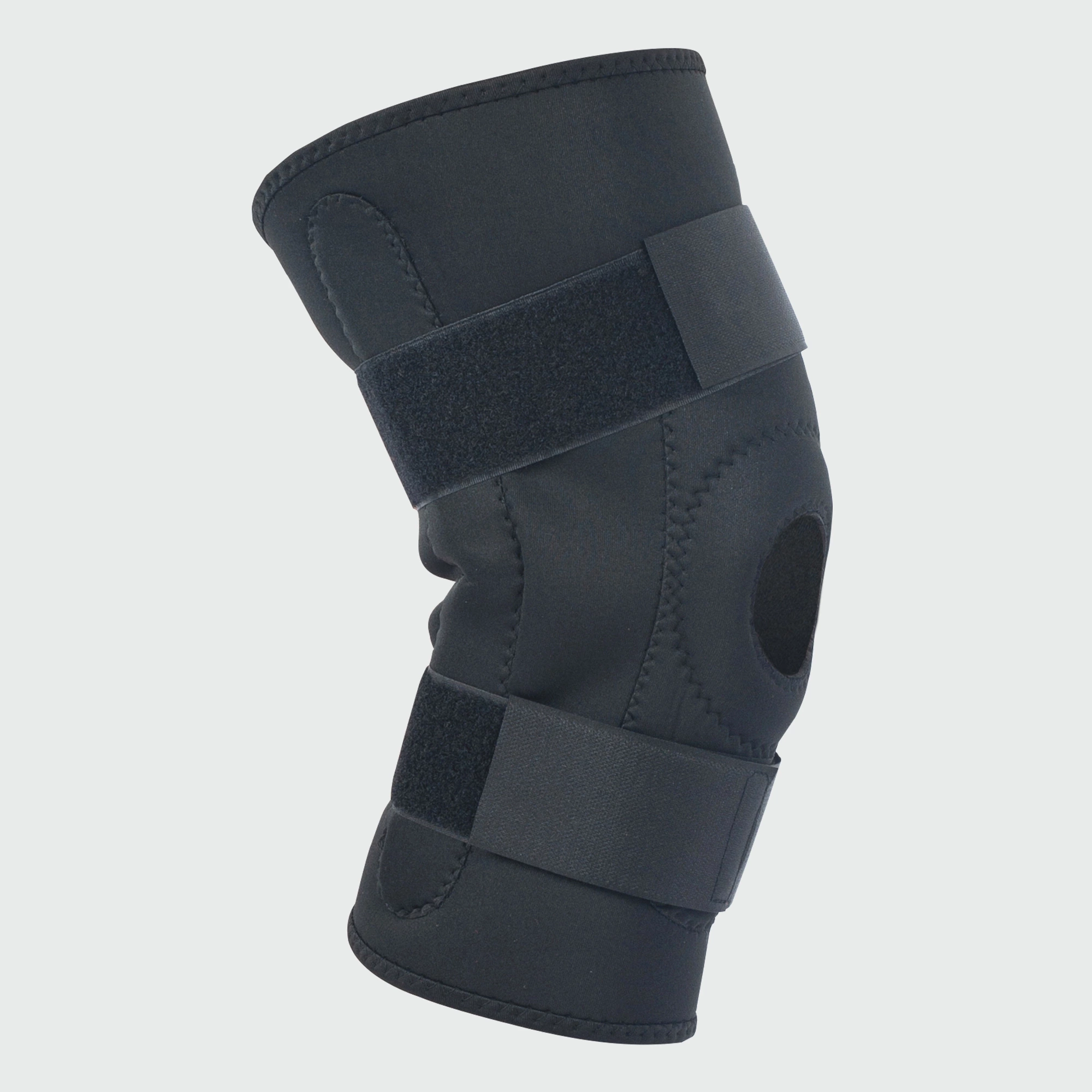
2. Hinged Knee Brace Support with Side Stabilisers and Patella Gel Pad
Hinged Knee Brace Support with Side stabilisers and Patella Gel Pad offers enhanced support with its hinged design and side stabilisers. The hinges help maintain proper alignment of the knee joint, while the side stabilisers prevent unnecessary movements that could cause injury. Additionally, the patella gel pad cushions the kneecap, providing extra protection and comfort. This brace is ideal for moderate to severe knee injuries or post-surgery recovery.
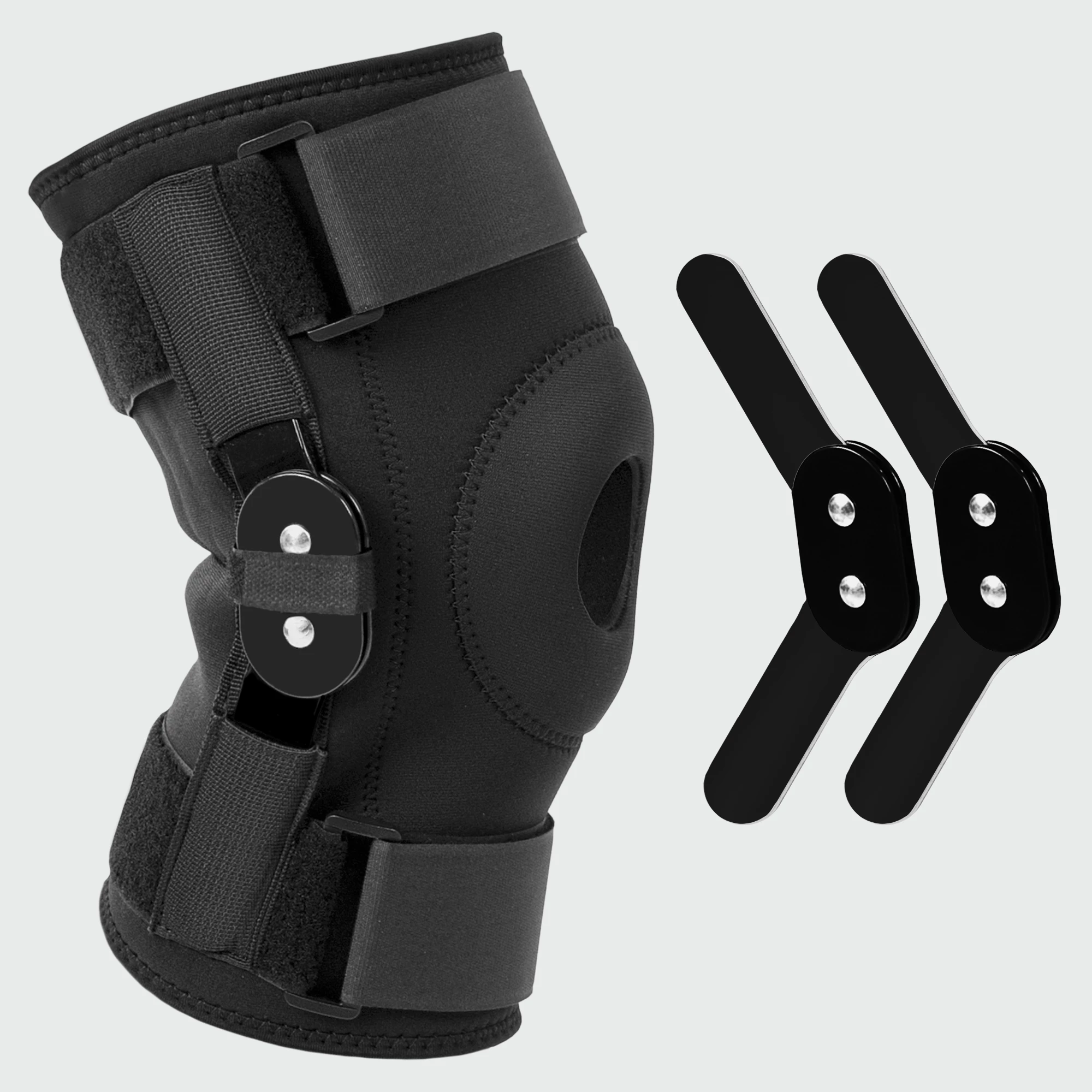
3. Hinged Knee Support Brace
The hinged knee support brace provides robust support for the knee with its rigid structure and hinges. It stabilises the knee joint, making it suitable for individuals recovering from ligament injuries or surgeries. The brace helps prevent the knee from moving in ways that could cause further damage, ensuring a safe and steady recovery process.
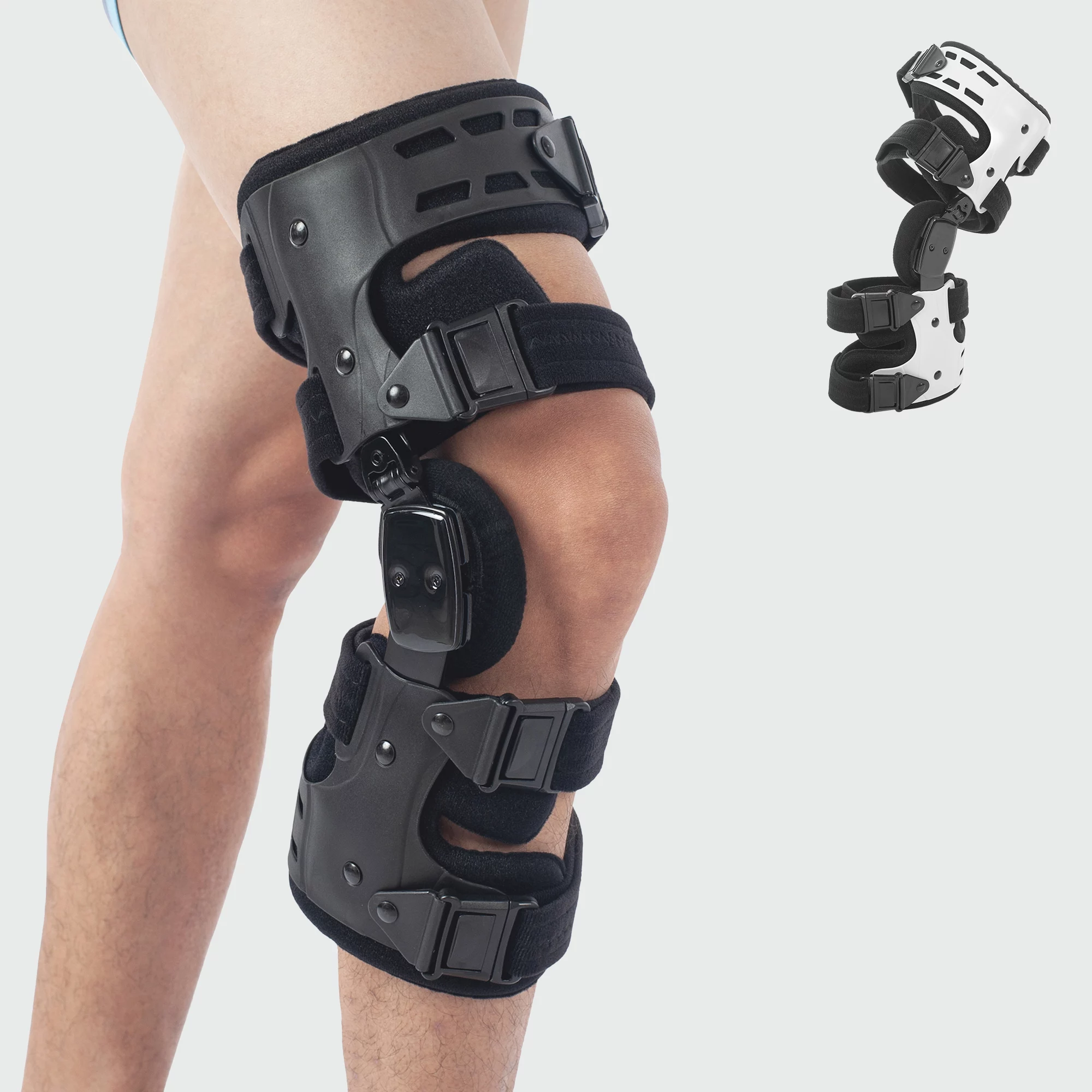
4. Hinged Open Patella Knee Support Brace with Removable Side stabilisers
This hinged open patella knee brace combines the benefits of a hinged design with an open patella (kneecap) feature. The open patella design relieves pressure on the kneecap, while the removable side stabilisers offer customisable support. You can adjust the level of stability by adding or removing the side stabilisers, making this brace versatile for different levels of knee pain and injuries.
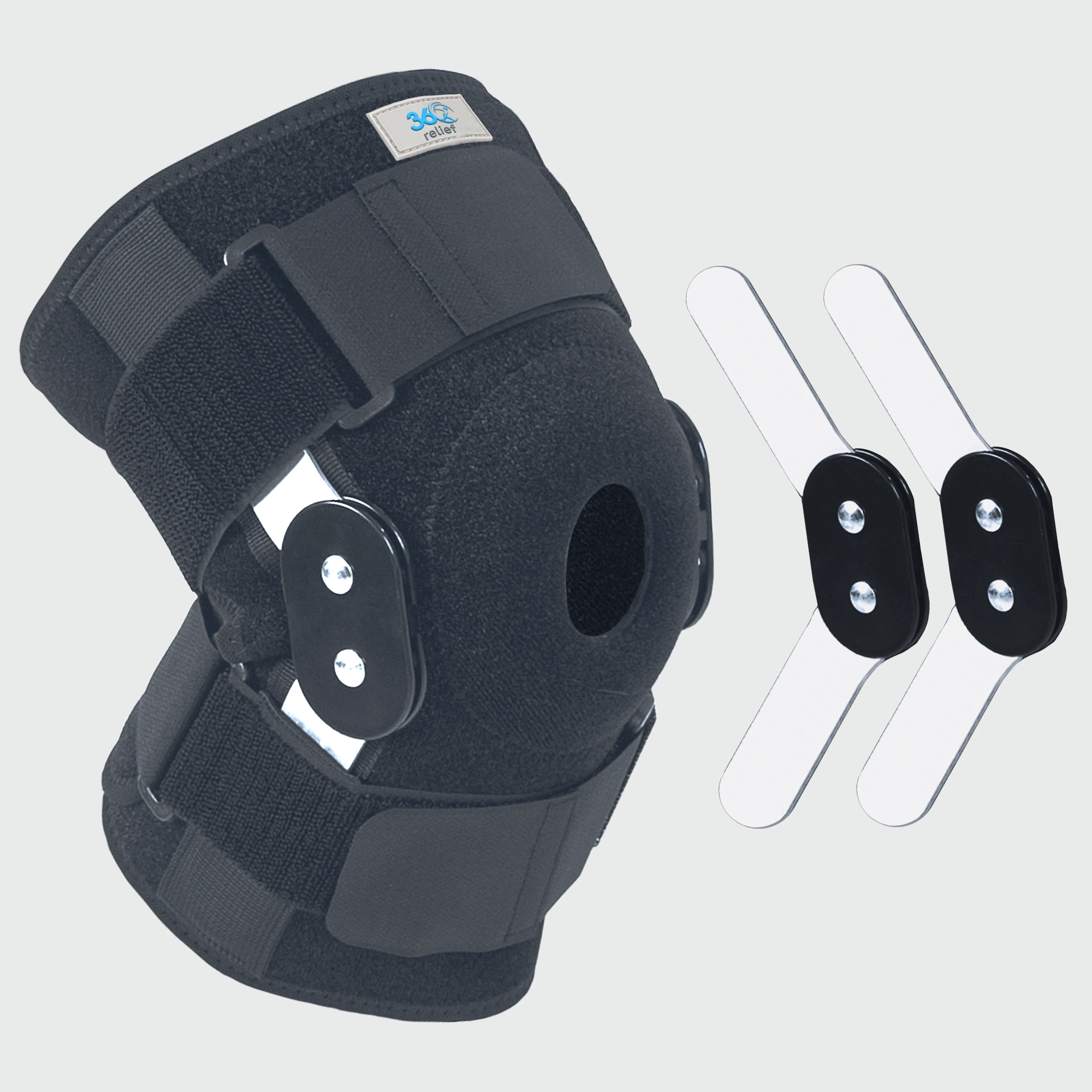
5. Patellar Tendon Knee Support Double Strap
The patellar tendon knee support with a double strap is designed to alleviate pressure on the patellar tendon, which connects the kneecap to the shinbone. This type of support is especially beneficial for conditions like patellar tendonitis, often experienced by athletes. The double strap system ensures a secure fit and provides targeted compression to the tendon, reducing pain and promoting healing.
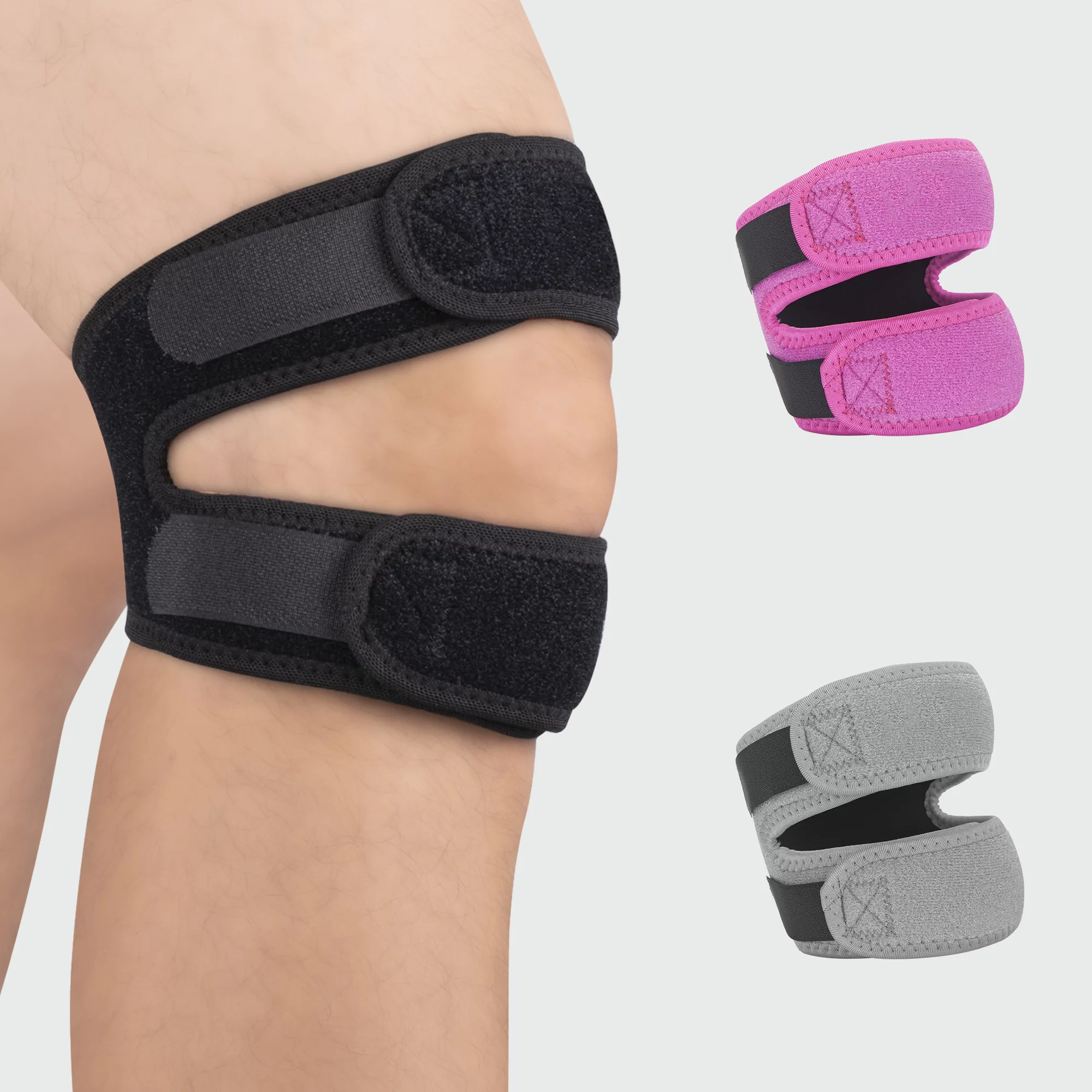
Home Remedies for Knee Pain Relief
Knee pain can be a debilitating condition, but several home remedies can help alleviate discomfort and promote healing. Here are some effective strategies to manage knee pain from the comfort of your home.
Exercise and Stretching
Regular exercise and stretching are crucial for maintaining knee health and reducing pain. Low-impact exercises, such as swimming, cycling, or walking, strengthen the muscles around the knee without putting too much strain on the joint. Gentle stretches improve flexibility and reduce stiffness, focusing on the quadriceps, hamstrings, and calf muscles to support knee movement.
Diet and Supplements
What you eat can have a significant impact on your knee health. An anti-inflammatory diet that includes foods rich in omega-3 fatty acids, such as fish, nuts, and seeds, helps reduce inflammation and pain. Additionally, supplements like glucosamine and chondroitin are known to support joint health. However, always consult with a healthcare provider before starting any new supplement regimen.
Essential Oils
Essential oils can provide natural relief for knee pain through their anti-inflammatory and analgesic properties. Peppermint oil, known for its cooling effect, can reduce pain and inflammation.
Mixing a few drops with a carrier oil and massaging it into the knee can be beneficial. Eucalyptus oil, with its anti-inflammatory properties, can also help soothe knee pain when diluted with a carrier oil and applied to the affected area.
Herbal Remedies
Herbs have been used for centuries to manage pain and promote healing. Turmeric contains curcumin, a powerful anti-inflammatory compound, and can be added to your diet or taken as a supplement to help reduce knee pain. Ginger, known for its anti-inflammatory properties, can be consumed as a tea or added to meals to alleviate pain.
Weight Management
Maintaining a healthy weight is crucial for reducing knee pain, as excess weight puts additional stress on the joints. Focusing on a balanced diet with plenty of fruits, vegetables, lean proteins, and whole grains while avoiding processed foods and sugary snacks can help manage weight. Regular exercise combining cardiovascular activities with strength training aids in shedding extra pounds and strengthening the muscles around the knee.
Massage and Acupuncture
Both massage and acupuncture can provide significant relief from knee pain. Regularly massaging the muscles around the knee improves blood circulation and reduces stiffness. Using gentle, circular motions to massage the affected area can be beneficial.
Acupuncture, a traditional Chinese medicine technique, involves inserting thin needles into specific points on the body. This method can help balance energy flow and reduce pain, and consulting with a licensed acupuncturist for treatment is recommended.
When to seek medical help for knee pain
- Severe Pain: If you experience intense pain that does not improve with rest or home remedies.
- Inability to Bear Weight: If you cannot put weight on your knee or walk without assistance.
- Significant Swelling: Noticeable swelling or redness around the knee joint.
- Joint Instability: If your knee feels unstable or gives way frequently.
- Limited Range of Motion: Difficulty moving your knee or a significant reduction in its range of motion.
Conclusion
Knee pain can significantly impact daily life, but many home remedies and supports can help manage it effectively. Hot and cold therapy, regular exercise, a balanced diet, essential oils, and proper knee support are all beneficial strategies. However, it’s crucial to recognise when to seek medical attention.
If you experience severe pain, inability to bear weight, significant swelling, joint instability, or limited range of motion, consult a healthcare provider. Combining appropriate home treatments with professional advice ensures better management of knee pain, enhancing your comfort and quality of life.


